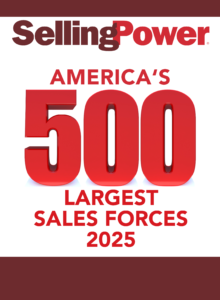How to Take Advantage of Today’s Software Buying Trends
Good news for software sales! The latest forecast from the market research firm Gartner shows that software is poised to grow faster than the rest of the IT market. In fact, software sales are driving IT buying behavior, making software sales reps more strategic than ever.
Overall, Gartner believes that worldwide IT spending will exceed $3.4 trillion in 2008, an increase of 8 percent from 2007 spending. And that’s hefty growth considering current economic concerns, according to Gartner vice president Jim Tully. "The U.S.-led economic downturn shows no sign of causing a recession in IT spending," he says. Tully believes that "in subsequent years we will see reduced growth [because] the fundamentals remain strong. Emerging regions, replacement of obsolete systems, and some technology shifts are driving growth."
As in previous years, the sweet spot of the IT market will continue to be software. Worldwide software spending is on pace for a growth rate in 2008 of more than 10 percent, higher than the 9.4 percent forecasted for services spending, the next highest segment. More importantly, that growth in services revenue is tightly linked to the growth in software sales because (as Gartner rightly points out) labor-based services are often required to implement software solutions.
What this means to you is an opportunity to make record sales – providing you can hitch your wagon to the right growth engine. The best way to make sales in the near term is to position your offerings to take advantage of the following key trends:
-
A growth in per-use implementations. Organizations are switching from company-owned hardware and software assets to per-use service-based models. The projected shift to cloud computing, for example, will result in dramatic growth in IT products in some areas and in significant reductions in other areas. IT groups want to utilize their assets with greater efficiency, which creates an upside potential for applications that make this possible.
Your best tactic: Push your Software as a Service (SaaS) products, if you’ve got them to push. -
Upgrades and conversions of existing packages. Gartner notes that many companies updated their software systems in preparation for Y2K disasters. As a result, many companies are now in the middle of an upgrade cycle that should extend past the end of this decade. Gartner notes, however, that the replacement of systems does not automatically equate to new software market growth because cloud computing, service oriented architecture, Web 2.0, and open source software are forcing software revenue away from traditional license revenue.
Your best tactic: Show how upgrading their current system – rather than moving to new technology – will save short-term costs. -
Growth in IT Services. Gartner believes that the outlook for IT services market growth has improved despite economic uncertainty. Businesses are investing in improvements to internal processes aimed at reducing costs, while often maintaining some of the prior interest in innovation. In addition, globalization allows IT services providers to mitigate the risk of weakening demand by operating in more markets.
Your best tactic: If you can offer IT services at a competitive price, build your bid around service, not software. -
Growth in PC sales. PCs represent the main area of hardware growth activity, which represents 60 percent of total hardware spending. Growth in PCs is stronger than previously expected, with no signs of a slowdown. The U.S. forecast has increased marginally while forecasts elsewhere, particularly Asia/Pacific and Western Europe, have increased significantly. A strong shift to mobile PCs is occurring. The higher prices of these products result in increasing revenue per unit and a boost to the overall market.
Your best tactic: Emphasize anything in your offering that helps mobile PC users to become more productive.
Get our Enewsletter
Get the latest sales leadership insight, strategies, and best practices delivered weekly to your inbox.
Sign up NOW →